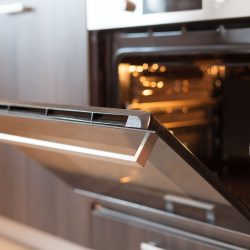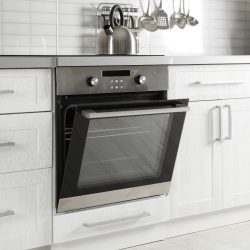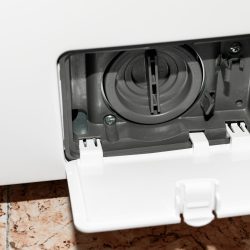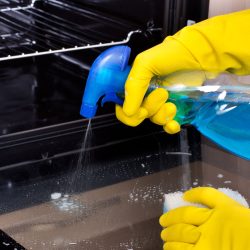Did your oven's terminal block melt? While it's not a common issue, it can pose serious problems when it does occur.
But why does it happen?
There are a few reasons why your oven terminal block may have melted, including loose connections, overloaded circuits, and faulty wiring.
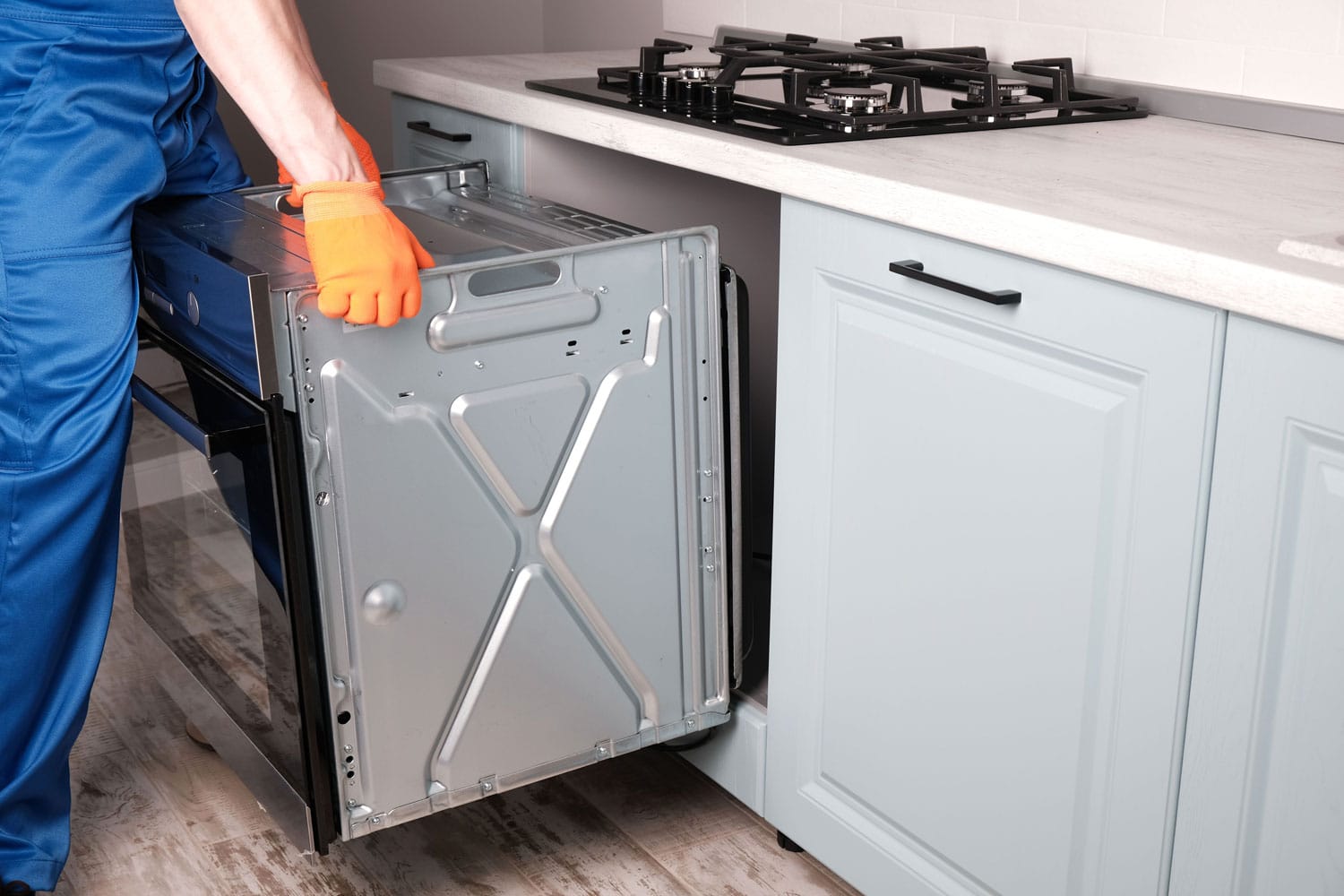
In this article, we'll dive deeper into why your oven terminal block may have melted and what steps you can take to fix the problem.
Keep reading to learn more.
What Exactly Is An Oven Terminal Block?
An Oven Terminal Block is a compact electrical component that bridges the oven's internal wiring and the power cord that plugs into the electrical outlet.
It's a conduit for electrical currents, ensuring that electricity flows into the oven, enabling it to function correctly.
You can find it at the rear of the oven, where the electrical supply enters, and often appears as a small box or strip with terminals for connecting wires.
What Causes Oven Terminal Block to Melt?
If you've ever experienced a melted oven terminal block, you know it's not a pleasant experience.
The terminal block is a crucial component that connects the oven's wiring to the power source.
When it melts, it can cause a range of problems, including a loss of power or even a fire (more on this later).
But why does it happen in the first place?
Overheating
One of the most common reasons for a melted terminal block is overheating.
If the oven is not properly ventilated or the temperature inside the oven gets too high, it can cause the terminal block to overheat and melt.
It can be caused by a variety of factors, including a faulty heating element, a malfunctioning thermostat, or a blocked air vent.
Loose Connection
If the wires are not properly secured to the terminal block, it can cause arcing, which generates heat and can melt the block.
Loose wires or screws that have become slack over time can lead to instability.
Short Circuit
Lastly, a melted terminal block can be caused by a short circuit.
If the wires inside the oven become damaged or frayed, they can come into contact with each other, causing a short circuit.
This generates a lot of heat and can cause the terminal block to melt.
For further reading on appliance issues, check out: Why Is My Microwave Sparking With No Metal Inside?
Is It Dangerous to Have a Melted Terminal Block?
At first glance, a melted terminal block in your oven might seem like a simple wear-and-tear issue.
But it's more than just an inconvenience—it carries some real risks.
One of the immediate dangers of a melted terminal block is the potential for electrical shorts.
If the terminal block is melted, it's a clear indication that there was excessive heat.
As explained, this could have been the result of an electrical overload or a short circuit. Either way, it poses a risk of further electrical issues.
The fact that there was enough heat to melt the terminal block means that there's a potential fire hazard.
Loose or damaged wires due to the melting can lead to arcing and sparking.
These sparks can ignite nearby materials or even the internal components of the oven, leading to a fire that could spread to other parts of your home.
What to Do If Your Oven Terminal Block Melts
If you've discovered that your oven's terminal block has melted, it's important to take immediate action to prevent any further damage.
Here are the steps you should take:
Step 1: Turn off and Unplug the Oven
The first thing you should do is turn off and unplug the oven.
Doing so will prevent any electrical current from flowing through the damaged terminal block, potentially causing a fire or other safety hazard.
Step 2: Avoid Using the Oven Until the Issue Is Resolved
It might sound obvious, but refrain from using the oven until the problem has been resolved.
Even if it seems to be functioning, there's an underlying issue that needs attention.
Step 3: Inspect for Any Other Visible Damage
Take a quick look (but don't touch!) to see if there's any other visible damage or signs of wear.
Doing so can help when explaining the situation to a technician or when determining the next steps.
Step 4: Contact a Professional or Technician for Assistance
It's essential to consult with a technician or professional who specializes in ovens or electrical appliances.
They can offer guidance on whether the terminal block can be replaced or if there are other underlying issues.
Attempting to repair or replace the terminal block on your own can be dangerous and cause further damage to the appliance.
If you don't have basic electrical skills, it's highly recommended to seek professional assistance to ensure your safety and the proper repair of your oven.
How to Replace a Melted or Faulty Oven Terminal Block?
If you're comfortable handling minor electrical repairs and prefer a DIY approach, replacing the terminal block in your oven might be feasible.
Below is a simplified guide on how you can replace a melted or faulty terminal block.
Tools Needed:
- Screwdriver (Phillips or flat-head as required by your oven model)
- A digital or smartphone camera (for documenting wire arrangements)
- Replacement terminal block (ensure it's the correct model for your oven)
Step 1: Ensure Safety
Before you begin, ensure the oven is turned off and unplugged from the electrical outlet to prevent any risk of electric shock.
Step 2: Locate the Terminal Block
Pull your oven away from the wall to access the rear panel.
The terminal block is typically located at the rear of the oven where the power cord enters the unit. A protective cover often covers it.
It's a rectangular block, often made of plastic material, with several wires connected to it via screws or clamps.
Step 3: Remove the Protective Cover and Cable Clamp
Using your screwdriver, take off the protective cover to expose the terminal block, then remove the cable clamp.
Step 4: Document the Wire Arrangement
Take a clear photo of the connections to the terminal block. This will help you reconnect the wires to the new terminal block correctly.
Step 5: Disconnect the Wires
Unscrew and remove the wires connected to the terminal block. Keep the screws safe, as you'll need them to attach the wires to the new terminal block.
Step 6: Remove the Old Terminal Block
Take out the screw holding the terminal block assembly, slide the assembly to disconnect it from the panel, and then remove the old terminal block.
Step 7: Install the New Terminal Block
Transfer the connections from the old terminal block to the new one, one at a time. Taking another photo before transferring the connections might be helpful for extra reference.
Step 8: Refit the Terminal Block Assembly
Line up the assembly and push it onto the back panel, slide it up to align the fixing hole, and then screw it in securely.
Step 9: Reconnect the Wires
Refer back to the photo you took earlier to reconnect the wires to the new terminal block.
Make sure any bridging links are in the correct position and all screws are tightened securely.
Step 10: Refit the Protective Cover and Cable Clamp
Put back the cable clamp and then the protective cover using your screwdriver.
Step 11: Restore Power and Test
Plug your oven back into the electrical outlet, turn on the power, and test your oven to ensure it's working properly and the issue has been resolved.
⚠️ Note: While this task can be a money-saver, it requires a certain level of comfort with electrical appliances.
If you feel uncertain, contact a professional technician for assistance.
For a visual guide, you may refer to this short YouTube video.
Preventive Measures to Avoid Future Terminal Block Issues
You can take some preventive measures to avoid future terminal block issues.
Here are some tips to keep your oven terminal block from melting:
Regular Inspections
Just like you'd check your car before a long drive, it's good practice to periodically inspect your oven's components.
You don't need to be an expert. Just keep an eye out for any visible signs of wear, fraying, or damage, particularly around the terminal block area.
Tighten Loose Connections
Over time, screws and connections can loosen. Every so often, ensure that connections are snug (but not overtightened).
If you're not comfortable doing this yourself, it's okay to ask for professional help.
Avoid Overloading the Oven
Stressing the oven by constantly running it at its maximum capacity or using it for extended periods can accelerate wear and tear.
Ensure you're using the oven within its recommended limits.
Stay Updated with Recalls
Sometimes, manufacturers identify issues with certain models and issue recalls.
It's good to stay updated with such announcements related to your oven brand and model.
Invest in Professional Maintenance
Consider having your oven checked by a technician annually or bi-annually.
They can spot potential issues before they escalate and offer guidance on maintaining the appliance's health.
Signs That Indicate a Problem with the Terminal Block Before It Melts
Before a terminal block reaches the point of melting, there are often several indicators that something is amiss with your oven.
Recognizing these signs in advance can prevent potential dangers and reduce repair costs. Take note of the following.
- Inconsistent Heating: If your oven isn't heating as it should or takes longer to reach the desired temperature, it might indicate an issue with the terminal block.
- Flickering Oven Lights: An erratic oven light, especially during use, suggests an electrical inconsistency that could be related to the terminal block.
- Unusual Noises: Buzzing, crackling, or popping sounds while the oven operates can point to electrical problems or loose connections at the terminal block.
- Burnt or Odd Smell: If there's a scent resembling burnt plastic or wires, it's a concern that should be addressed.
- Visual Checks: Discoloration, charring, or wear around the terminal block or the oven's rear are signs of potential issues.
- Intermittent Oven Function: If the oven behaves unpredictably, turns off unexpectedly, or starts inconsistently, it may be related to the terminal block.
Explore more on oven safety and understand how exterior temperatures are affected in our guide: Should Ovens Get Hot On The Outside?
In Closing
A melted oven terminal block is a serious issue that should not be taken lightly.
It can lead to dangerous situations such as electrical fires and should be addressed immediately.
If you notice any signs of damage or melting, it is important to turn off the power to your oven and call a professional to assess the situation.


![Woman cleaning oven in kitchen - How to Clean Oven When Aqualift Doesn't Work [Step by Step Guide]](https://kitchenseer.com/wp-content/uploads/2023/08/Woman-cleaning-oven-in-kitchen-250x250.jpg)
